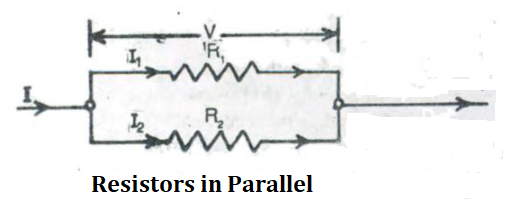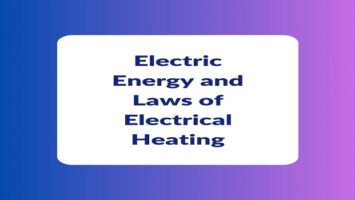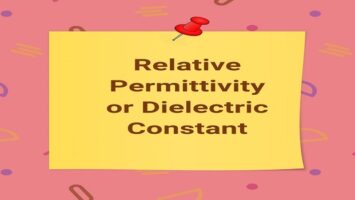Resistors in Series and Parallel:
Resistors in Series: When several resistors are joined in such a manner that the same current has to pass successively through them, they are said to be joined in series.

Let the resistance of the resistors joined in series be R1, R2, …, Rn, and the current passing through them be I. If V1, V2, …, Vn are the potential difference across R1, R2, …, Rn respectively, and V is the potential difference across the combination, then
| V = V1 + V2 + … + Vn ⇒ V = IR1 + IR2 + … + IRn ⇒ V = I (R1 + R2 + … + Rn) ⇒ V = IR Where R = R1 + R2 + … + Rn |
Now as I = V/R, where V is the potential difference across the combination and I is the current, therefore R is known as the total or equivalent resistance of the resistors R1, R2, …, Rn connected in series.
Characteristics of Series Circuit:
- The same current flows through each resistor.
- The potential difference across each resistor is different, the larger the resistance, the higher the potential difference.
- Power consumed is different in different resistors, the larger the resistance, the higher the power consumed.
- The equivalent resistance is higher than the highest resistance.
Resistors in Parallel: When resistors are joined in such a manner that the current is distributed into a number of branches, but the potential difference across each resistor remains the same, the resistors are said to be joined in parallel.

Let the resistances of the resistors joined in parallel be R1, R2, …, Rn, and the potential difference across them be V. Then if the current I arriving at the junction of the resistor is divided into parts I1, I2, …, In in flowing along the branches R1, R2, …, Rn then
| I = I1 + I2 + … + In ⇒ I = V/R1 + V/R2 + … + V/Rn ⇒ I = V (1/R1 + 1/R2 + … + 1/Rn) ⇒ I = V/R Where 1/R = 1/R1 + 1/R2 + … + 1/Rn |
Now, again as I = V/R where V is the potential difference across the combination and I is the total current flowing in the main circuit, R is known as the total or equivalent resistance of the resistors R1, R2, …, Rn joined in parallel.
Characteristics of Parallel Circuit:
- The potential difference across each resistor is the same.
- The current flowing through each resistor is different, larger current flows through the path of lower resistance.
- Power consumed in each resistor is different being highest in the lowest resistance.
- The equivalent resistance is less than the least resistance.









Comments (No)